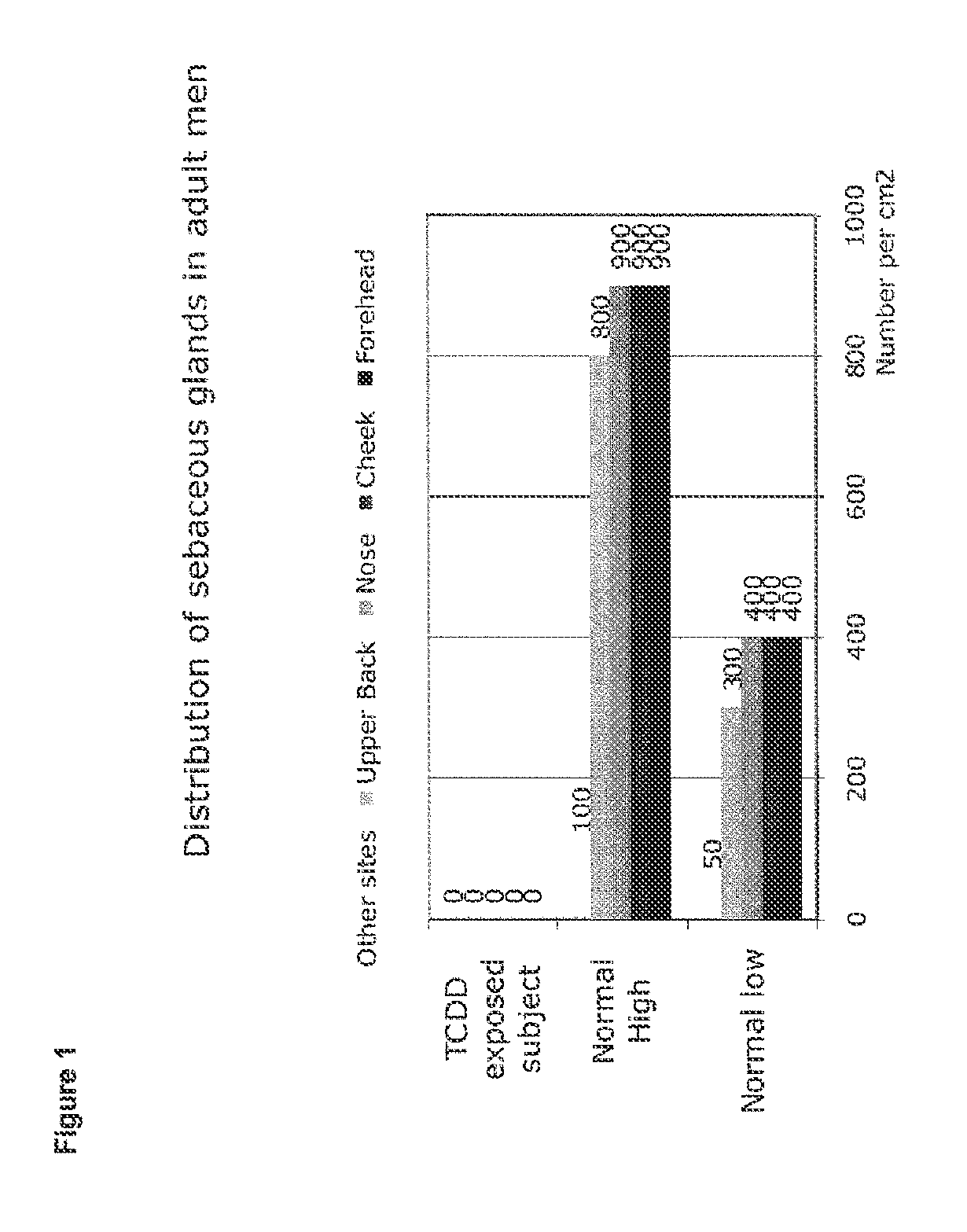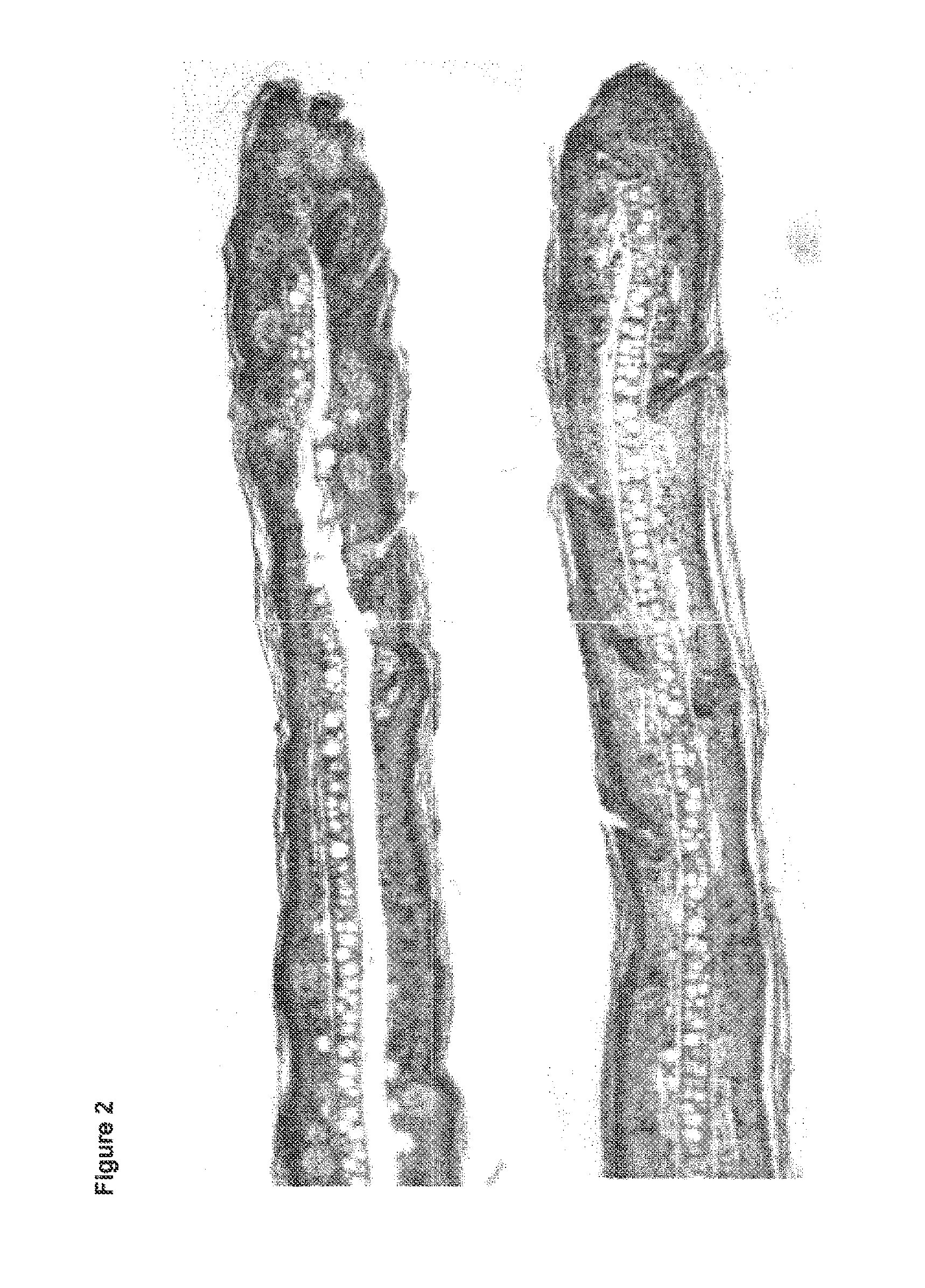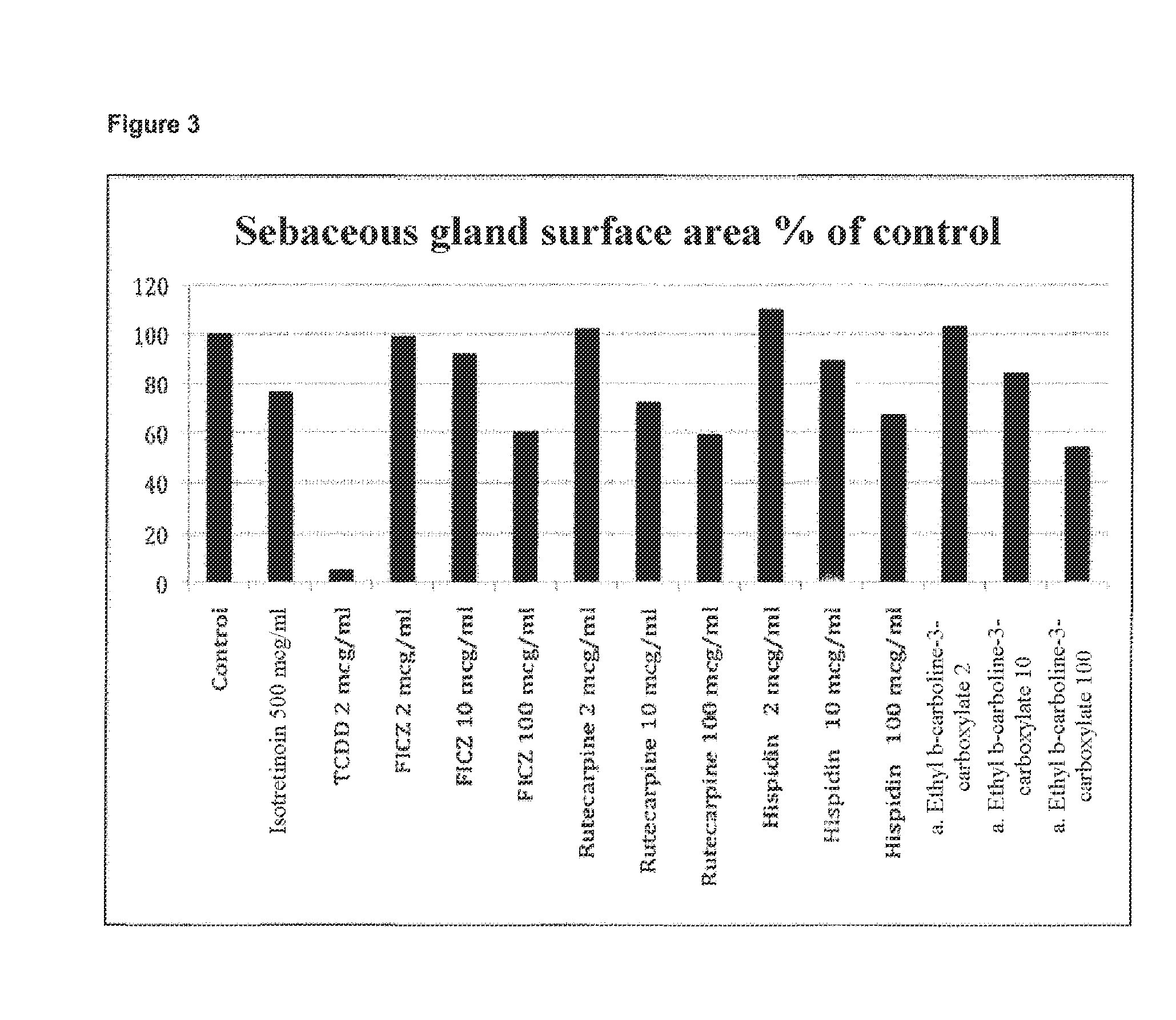Method of Treating Acne
a technology for acne and topical use, applied in the field of acne treatment, can solve the problems of increasing the risk of certain cancers, selecting resistant strains, and not increasing the intrinsic defenses of individuals
- Summary
- Abstract
- Description
- Claims
- Application Information
AI Technical Summary
Benefits of technology
Problems solved by technology
Method used
Image
Examples
example 1
Sebaceous Glands
[0135]The sebaceous glands, which are present in large numbers in normal human skin, disappear during exposure to toxic doses of TCDD. FIG. 1 shows the number of sebaceous glands per square centimeter on various areas of the human body, which is distributed from 50 to 900 depending on areas and individuals. Thus, on the face of an adult, the number is between 400 and 900 / cm2.
[0136]FIG. 1 shows that, when there is exposure to TCDD, the sebaceous glands disappear in all the areas studied. For each site, 3 to 10 skin biopsies were analyzed after fixing with formol and staining with hematin-eosin. At least 10 sections per block were analyzed. Out of a total of 62 biopsies, totaling 620 sections, no sebaceous gland could be observed, whereas the number and structure of the sweat glands and the hairs were conserved. These data were obtained on specimens of human skin containing from 930 to 2900 ppt of TCDD measured by gas chromatography / mass spectrometry.
[0137]The effect o...
example 2
[0143]The healing time of superficial epidermal-dermal wounds (dermabrasions) is considerably decreased by TCDD. FIG. 5 shows the percentage of surf ace area healed as a function of time of 4 dermabrasions in the case of the presence of TCDD in the skin (TCDDl-4, 930 to 2900 ppt TCDD measured by gas chromatography / mass spectrometry) in comparison with 4 controls (C1-C4). FIG. 6 shows the mean values calculated from the data of FIG. 5. Thus, the time to complete healing is reduced from 9.3 to 5 days.
[0144]FIG. 7 shows, in a model of wound healing in vitro on a culture of human keratinocytes, that the gap in the culture is repaired with TCDD and with active substances according to the invention in proportions similar to what is observed after application of growth factors. The wound is induced by means of an incision with a yellow micropipette tip (10-200 μl). Migration index value obtained with the ligand / that of the control without ligand. These results indic...
example 3
Estrogenic Effect
[0148]The expression of the messenger RNAs of the various estrogen receptors ESRR and ER, of the estrogen responsive finger protein (EFP) ligase and of the estrogen-producing aromatase enzyme is increased in skin exposed to TCDD. FIG. 10a shows the RT PCR ratios on fragments of human skin containing 1800 ppt of TCDD, measured by gas chromatography / mass spectrometry, in comparison with the controls: exposing a man to high doses of TCDD significantly increases, in the skin, the expression of messenger RNAs of estrogen receptors and of associated proteins, and also of aromatase, thus corresponding to a state of hyperestrogenism. FIG. 10b shows that, in these skin fragments, there is a strong ectopic and focal expression of the ER-alpha receptor protein in the pilosebaceous structures, which indicates that the local induction of a state of hyperestrogenism by TCDD is focused on a skin structure which is known to be hormone-dependent. The immunohistochemistry reveals a s...
PUM
| Property | Measurement | Unit |
|---|---|---|
| healing time | aaaaa | aaaaa |
| healing time | aaaaa | aaaaa |
| time | aaaaa | aaaaa |
Abstract
Description
Claims
Application Information
 Login to View More
Login to View More - R&D
- Intellectual Property
- Life Sciences
- Materials
- Tech Scout
- Unparalleled Data Quality
- Higher Quality Content
- 60% Fewer Hallucinations
Browse by: Latest US Patents, China's latest patents, Technical Efficacy Thesaurus, Application Domain, Technology Topic, Popular Technical Reports.
© 2025 PatSnap. All rights reserved.Legal|Privacy policy|Modern Slavery Act Transparency Statement|Sitemap|About US| Contact US: help@patsnap.com



